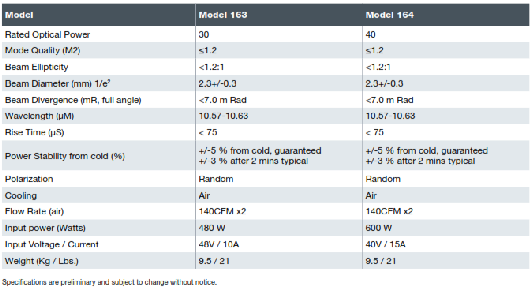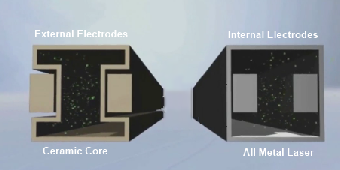|
Ceramic Core CO2 Laser Technology
Most CO2 lasers offered today are based on the original R&D approach developed at several different aerospace companies in the 1970s. This traditional approach involves extruding or machining aluminum bodies to contain the optical and electrical components inside the laser gas envelope - the laser tube. These designs are convenient for R&D work, but not ideal for building lasers that are reliable, and have long lifetimes. The ceramic CO2 laser tube has a significant advantage.
The leading reliability issue with metal-tube lasers is that the metal is highly reactive with the gas mixture. Over time, as internal components wear, "scrub" each other's surfaces, fresh aluminum is exposed. Free oxygen in the laser's gas reacts with this raw metal (oxidation) changing the composition of the original gas mixture. In addition, many of these designs use O-ring seals that can allow air and moisture to enter the laser tube and further compromise the all-important gas mixture. These issues are eliminated with Ceramic CO2 laser tubes.
Ceramic CO2 laser tube technology solves these problems by moving all the reactive components to the outside of the laser tube leaving only pure clean Alumina (Al2O3) ceramic in contact with reactive gasses. Due to its chemical makeup, Alumina does not react with the gas. Alumina can also be fired at very high temperatures as part of the cleaning process. This further assures there are no organic contaminants from laser tube manufacturing, that remains inside the laser tube to react with the gas.
The ceramic CO2 laser tube is also the optical backbone that holds the resonator optics. The CTE (coefficient of thermal expansion) of alumina is 1/3 the CTE of aluminum. Since laser tube thermal variations have a direct impact on laser stability, Iradion's Ceramic CO2 laser tube has significantly better stability performance when compared with metal-based CO2 lasers. Ceramic CO2 laser tubes also enables gas mixtures of comparatively high pressure to be used. Ceramic CO2 laser tubes allow for high pressure gas mixes and provide for faster rise and fall speed as well as much better power stability.
|





